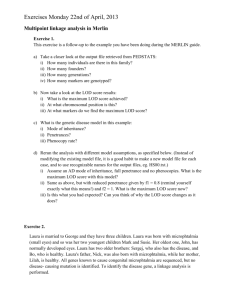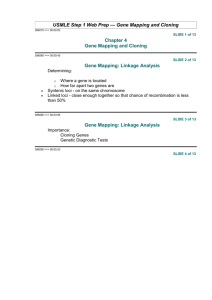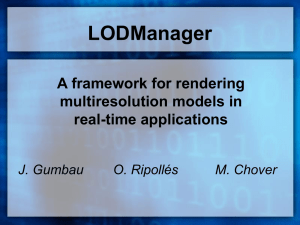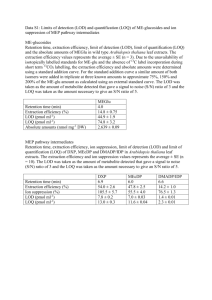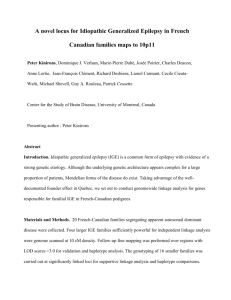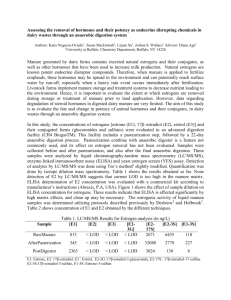Information Systems Development: True/False Questions
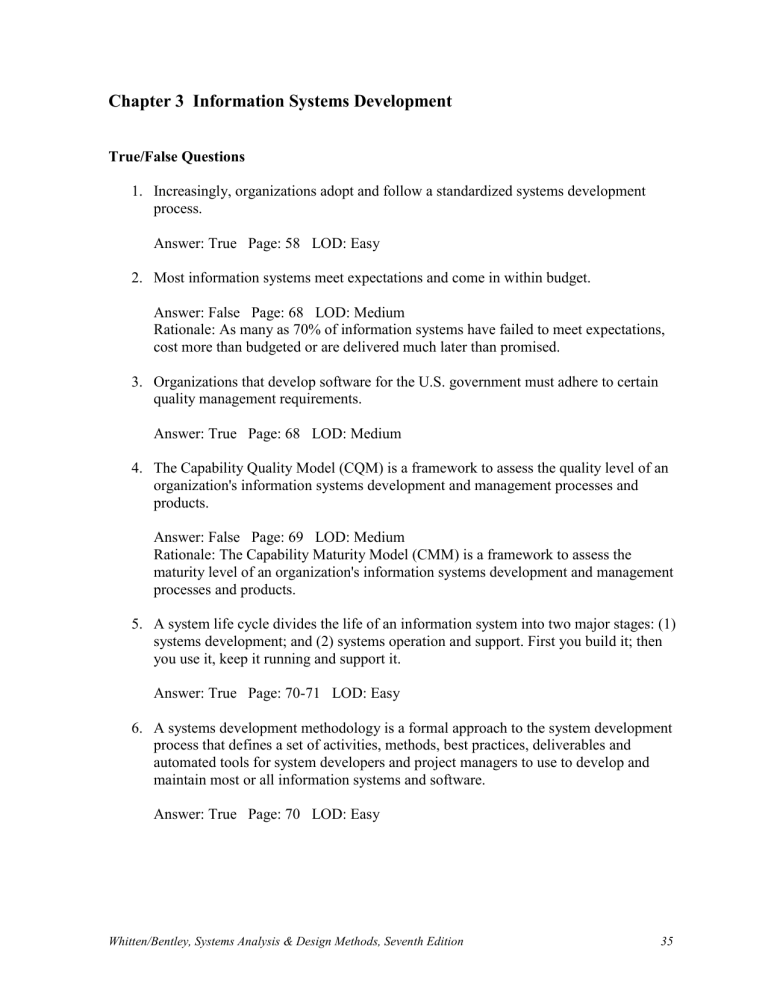
Chapter 3 Information Systems Development
True/False Questions
1. Increasingly, organizations adopt and follow a standardized systems development process.
Answer: True Page: 58 LOD: Easy
2. Most information systems meet expectations and come in within budget.
Answer: False Page: 68 LOD: Medium
Rationale: As many as 70% of information systems have failed to meet expectations, cost more than budgeted or are delivered much later than promised.
3. Organizations that develop software for the U.S. government must adhere to certain quality management requirements.
Answer: True Page: 68 LOD: Medium
4. The Capability Quality Model (CQM) is a framework to assess the quality level of an organization's information systems development and management processes and products.
Answer: False Page: 69 LOD: Medium
Rationale: The Capability Maturity Model (CMM) is a framework to assess the maturity level of an organization's information systems development and management processes and products.
5. A system life cycle divides the life of an information system into two major stages: (1) systems development; and (2) systems operation and support. First you build it; then you use it, keep it running and support it.
Answer: True Page: 70-71 LOD: Easy
6. A systems development methodology is a formal approach to the system development process that defines a set of activities, methods, best practices, deliverables and automated tools for system developers and project managers to use to develop and maintain most or all information systems and software.
Answer: True Page: 70 LOD: Easy
Whitten/Bentley, Systems Analysis & Design Methods, Seventh Edition 35
Chapter 3 Information Systems Development
7. The first principle of a systems development methodology is to get the system owners and system users involved.
Answer: True Page: 72 LOD: Easy
8. Some organizations develop their own system development methodologies.
Answer: True Page: 70 LOD: Easy
9. A problem could be a real problem, an opportunity for improvement or a directive from management.
Answer: True Page: 72 LOD: Easy
10. The number and scope of phases and activities in a methodology varies.
Answer: False Page: 72 LOD: Medium
Rationale: The number and scope of phases and activities vary from author to author, expert to expert, methodology to methodology, and business to business.
11. All life cycle methodologies prescribe phases and activities.
Answer: True Page: 72 LOD: Easy
12. The final phase in most system development methodologies is documentation.
Answer: False Page: 72 LOD: Medium
Rationale: Documentation is done throughout development.
13. Process management involves the scoping, planning, staffing, organizing, directing, and controlling a project to develop an information system.
Answer: False Page: 74 LOD: Medium
Rationale: Project management involves the scoping, planning, staffing, organizing, directing, and controlling a project to develop an information system.
14. Project management ensures that an information system is developed at minimum cost, within a specific time frame, and with acceptable quality.
Answer: True Page: 74 LOD: Easy
36 Whitten/Bentley, Systems Analysis & Design Methods, Seventh Edition
Chapter 3 Information Systems Development
15. Cost effectiveness is the result obtained by striking a balance between the lifetime costs of developing, maintaining, and operating an information system and the benefits derived from the system.
Answer: True Page: 75 LOD: Easy
16. A feasibility study is done to determine if a system development project is costeffective. After that point, the project will not be cancelled.
Answer: False Page: 73 LOD: Easy
Rationale: Don't be afraid to cancel at any point in the process.
17. The first solution an analyst finds is usually the best solution. It is not cost effective to consider alternatives.
Answer: False Page: 72 LOD: Medium
Rationale: Identify candidate solutions that fulfill the requirements, and select the best solution.
18. Project management is defined as the result obtained by striking a balance between the cost of developing and operating information systems and the benefits derived from that system.
Answer: False Page: 75 LOD: Medium
Rationale: Cost-effectiveness is defined as the result obtained by striking a balance between the cost of developing and operating information systems and the benefits derived from that system
19. Risk management is the process of identifying, evaluating and controlling what might go wrong in a project before it becomes a threat to the successful completion of the project or implementation of the information system.
Answer: True Page: 76 LOD: Easy
20. By dividing a larger problem (system) into more easily manage pieces (subsystems); the analyst can simplify the problem-solving process.
Answer: True Page: 76 LOD: Easy
Whitten/Bentley, Systems Analysis & Design Methods, Seventh Edition 37
Chapter 3 Information Systems Development
21. According to best practices, it is important to consider the information system as a whole if one is going to get the best solution. Dividing it into smaller pieces is an obsolete way to design and develop the system.
Answer: False Page: 76 LOD: Medium
Rationale: By dividing a larger problem (system) into more easily manage pieces
(subsystems), the analyst can simplify the problem-solving process. This still a very important part of the system development process and helps facilitate communication as well as project management.
22. Information systems should be designed for growth and change. Where possible, flexibility and adaptability are important to the overall success and longevity of an information system.
Answer: True Page: 76 LOD: Easy
23. The sole focus of system development should be to meet today's user requirements. It is impossible to anticipate ways to meet future needs since they are unknown. It is better to develop the system as quickly as possible with the requirements that are known today.
Answer: False Page: 76 LOD: Medium
Rationale: Many system analysts develop systems to meet only today's user requirements. This is short sighted, and frequently leads to long-term problems.
Although not easy, it is important to consider flexibility and adaptability issues that can potentially be accommodated by this system.
24. Problems are undesirable situations that prevent the organization from fully achieving its purpose, goals and/or objectives.
Answer: True Page: 77 LOD: Easy
25. Opportunities are chances to improve the organization in the absence of specific problems.
Answer: True Page: 77 LOD: Easy
26. A directive is a new requirement that's imposed by management, government or some external influence.
Answer: True Page: 77 LOD: Easy
38 Whitten/Bentley, Systems Analysis & Design Methods, Seventh Edition
Chapter 3 Information Systems Development
27. FAST is a leading commercial methodology.
Answer: False Page: 71 LOD: Easy
Rationale: FAST is not a real-world commercial methodology.
28. Projects are always planned.
Answer: False Page: 77 LOD: Easy
Rationale: Projects can be planned or unplanned.
29. A steering committee is comprised of system owners and IT managers who determine which requests and projects get approved and scheduled.
Answer: True Page: 77 LOD: Easy
30. Requests that are approved and placed on the schedule are considered to be backlogged because the resources are available to implement them.
Answer: False Page: 77 LOD: Medium
Rationale: Requests that are NOT approved are backlogged until resources become available to do them.
31. The scope definition phase must consider the question, "Is this project worth looking at?"
Answer: True Page: 79 LOD: Easy
32. Scope frequently changes during a project.
Answer: True Page: 82 LOD: Medium
33. Scope defines how big the project is or will be.
Answer: True Page: 82 LOD: Easy
34. Given the initial scope of the project, the analyst can staff the project team, estimate the budget for systems development and prepare a schedule for the remaining phases of development.
Answer: True Page: 82 LOD: Easy
Whitten/Bentley, Systems Analysis & Design Methods, Seventh Edition 39
Chapter 3 Information Systems Development
35. The earliest that a systems analyst can project the staffing for a project, estimate its budget and prepare a schedule is during the requirements analysis phase.
Answer: False Page: 82 LOD: Medium
Rationale: Given the initial scope of the project, the analyst can staff the project team, estimate the budget for systems development and prepare a schedule for the remaining phases of development.
36. The problem analysis phase provides for a study and analysis of the requirements for the new system.
Answer: False Page: 82-83 LOD: Medium
Rationale: The problem analysis phase provides for a study and analysis of the
EXISTING system. The requirements analysis phase is used to define and prioritize the business requirements for the NEW system.
37. The primary deliverable of the problem analysis phase is system improvement objectives. These objectives do not define inputs, outputs or processes. Instead, they define the business criteria on which any new system will be evaluated.
Answer: True Page: 82 LOD: Medium
38. System designers and system builders can frequently skip the requirements analysis phase because they have performed this step in the past and know what the users need.
Answer: False Page: 84 LOD: Medium
Rationale: You should never skip the requirements analysis phase. One common complaint about new systems and applications is that they don't satisfy the users' needs.
39. The decision analysis phase (1) identifies candidate solutions that fulfill system requirements, (2) analyzes those solutions for feasibility, and (3) recommends a candidate system as the target solution.
Answer: True Page: 85 LOD: Easy
40 Whitten/Bentley, Systems Analysis & Design Methods, Seventh Edition
Chapter 3 Information Systems Development
40. The purpose for the decision analysis phase is to identify all of the decision-making situations potentially faced by management that must be addressed in the design and development of a new system.
Answer: False Page: 85 LOD: Medium
Rationale: The purpose of the decision analysis phase is to identify candidate solutions, analyze those candidate solutions for feasibility and recommend a candidate solution as the target solution to be designed.
41. Technical feasibility is used to determine if a solution is technically feasible and if the staff has the technical expertise to design and build the solution.
Answer: True Page: 85 LOD: Easy
42. Operational feasibility is used to determine if the design team has the technical skills needed to actually get the proposed solution into operation.
Answer: True Page: 85 LOD: Easy
Rationale: Operational feasibility is used to determine if the solution will fulfill the users' requirements and to what degree; by determining whether the solution will change the users' work environment; and how the users feel about such a solution.
43. Economic feasibility is used to determine if a solution is cost-effective, which means that there is a favorable balance between the cost of developing the solution and the benefits derived from that solution.
Answer: True Page: 85 LOD: Easy
44. Schedule feasibility is used to determine if the performance of the proposed system will fit into the users' working schedules.
Answer: False Page: 85 LOD: Medium
Rationale: Schedule feasibility is used to determine if the solution can be designed and implemented within an acceptable time period.
45. Risk feasibility is the probability of a successful implementation using the chosen technology and approach.
Answer: True Page: 85 LOD: Easy
Whitten/Bentley, Systems Analysis & Design Methods, Seventh Edition 41
Chapter 3 Information Systems Development
46. System support is the ongoing technical support for users, as well as the maintenance required to fix any errors, omissions or new requirements that may arise.
Answer: True Page: 88 LOD: Easy
47. System support is the operating system and technology architecture used in the design of the information system.
Answer: False Page: 88 LOD: Medium
Rationale: System support is the ongoing technical support for users, as well as the maintenance required to fix any errors, omissions or new requirements that may arise.
48. Cross life cycle activities are activities that overlap many or all phases of the methodology.
Answer: True Page: 88 LOD: Easy
49. Fact-finding is the formal process of using research, interviews, meetings, questionnaires, sampling and other techniques to collect information about systems, requirements, and preferences.
Answer: True Page: 88 LOD: Easy
50. Documentation is the activity of recording facts and specifications for a system for current and future reference.
Answer: True Page: 89 LOD: Easy
51. Documentation is the formal process of using research, interviews, meetings, questionnaires, sampling and other techniques to collect information about systems, requirements and preferences.
Answer: False Page: 89 LOD: Medium
Rationale: Fact-finding is the formal process of using research, interviews, meetings, questionnaires, sampling and other techniques to collect information about systems, requirements, and preferences. Documentation is the activity of recording facts and specifications for a system for current and future reference.
52. Presentation is the activity of communicating findings, recommendations, and documentation for review by interested users and managers. It may be written or verbal.
Answer: True Page: 89 LOD: Easy
42 Whitten/Bentley, Systems Analysis & Design Methods, Seventh Edition
Chapter 3 Information Systems Development
53. A repository is a database or other filing mechanism where system developers store all documentation, knowledge, and products for one or more information systems or projects.
Answer: True Page: 89 LOD: Easy
54. Feasibility is a measure of how beneficial the development of an information system would be to an organization.
Answer: True Page: 89 LOD: Easy
55. A repository is a measure of how beneficial the development of an information system would be to an organization.
Answer: False Page: 89 LOD: Medium
Rationale: A repository is a database where system developers store all documentation, knowledge, and products for one or more information systems or projects. Feasibility is a measure of how beneficial the development of an information system would be to an organization.
56. An iterative development methodology is often called a waterfall development approach.
Answer: False Page: 89 LOD: Medium
Rationale: A sequential development methodology is often called a waterfall development approach.
57. Process management is an ongoing activity that documents, manages the use of, and improves an organization's chosen methodology for systems development. It is concerned with the activities, deliverables, and quality standards to be applied to all projects.
Answer: True Page: 89 LOD: Easy
58. Project management is the activity of defining, planning, directing, monitoring and controlling a project to develop an acceptable system within the allotted time and budget.
Answer: True Page: 92 LOD: Easy
Whitten/Bentley, Systems Analysis & Design Methods, Seventh Edition 43
Chapter 3 Information Systems Development
59. Project management is an ongoing activity that documents, manages the use of, and improves an organization's chosen methodology for systems development. It is concerned with the activities, deliverables, and quality standards to be applied to all projects.
Answer: False Page: 89 LOD: Medium
Rationale: Process management is an ongoing activity that documents, manages the use of, and improves an organization's chosen methodology for systems development.
It is concerned with the activities, deliverables, and quality standards to be applied to all projects.
60. A logical model does not include implementation details.
Answer: True Page: 94 LOD: Medium
61. The sequential development approach has lost favor with most system developers..
Answer: True Page: 89 LOD: Medium
62. Timeboxing is the imposition of a nonextendable period of time, usually 6 to 9 days.
Answer: False Page: 100 LOD: Medium
Rationale: Timeboxing is the imposition of a nonextendable period of time, usually 60 to 90 days.
63. Data modeling is a process-centered technique popularized .by the structured analysis and design methodology.
Answer: False Page: 97 LOD: Medium
Rationale: Data modeling is a data-centered technique used to model business data requirements and design database systems that fulfill those requirements.
64. Time-boxing fits with the iterative approach.
Answer: True Page: 92 LOD: Hard
65. An advantage of the model-driven approach is that it makes it easier to identify, conceptualize, and analyze alternative technical solutions.
Answer: True Page: 96 LOD: Medium
44 Whitten/Bentley, Systems Analysis & Design Methods, Seventh Edition
Chapter 3 Information Systems Development
66. Object-oriented analysis and design attempts to merge the data and process concerns into singular constructs called objects. A system is documented in terms of its objects and their interactions.
Answer: True Page: 97 LOD: Easy
67. Object-oriented analysis and design is an object-centered, data-sensitive technique used to model business requirements in terms of objects and entities using entity relationship diagrams to prototype an information system.
Answer: False Page: 97 LOD: Medium
Rationale: Object-oriented analysis and design attempts to merge the data and process concerns into singular constructs called objects. A system is documented in terms of its objects and their interactions. Information engineering is a data-centered but process-sensitive technique used to model business requirements and design systems that fulfill those requirements. Information engineering emphasizes a modeling tool called entity relationship diagrams.
68. Rapid application development (RAD) techniques emphasize extensive user involvement for rapid and evolutionary construction of working prototypes of a system to accelerate the system development process.
Answer: True Page: 98 LOD: Easy
69. Commercial off-the-shelf software is a software package or solution that is purchased to support one or more business functions and information systems.
Answer: True Page: 100 LOD: Easy
70. An enterprise resource planning (ERP) software product is a fully integrated collection of information systems that span most basic business functions required by a major corporation.
Answer: True Page: 100 LOD: Easy
71. When using a COTS solution a gap analysis is often performed.
Answer: True Page: 103 LOD: Medium
Whitten/Bentley, Systems Analysis & Design Methods, Seventh Edition 45
Chapter 3 Information Systems Development
72. Computer aided systems engineering (CASE) tools are software programs that automate or support the drawing and analysis of system models and provide for the translation of system models into application programs.
Answer: True Page: 108 LOD: Easy
73. Forward engineering allows a CASE tool to read existing program code and transform that code into a representative system model that can be edited and refined by the systems analyst.
Answer: False Page: 108-109 LOD: Medium
Rationale: Forward engineering requires the systems analyst to draw system models, either from scratch or from templates. The resulting models are subsequently transformed into program code. Reverse engineering allow a CASE tool to read existing program code and transform that code into a representative system model that can be edited and refined by the systems analyst.
74. Reverse engineering requires the systems analyst to draw system models, either from scratch or from templates. The resulting models are subsequently transformed into program code.
Answer: False Page: 108-109 LOD: Medium
Rationale: Forward engineering requires the systems analyst to draw system models, either from scratch or from templates. The resulting models are subsequently transformed into program code. Reverse engineering allow a CASE tool to read existing program code and transform that code into a representative system model that can be edited and refined by the systems analyst.
Multiple Choice Questions
75. Which of the following is NOT one of the principles of Systems Development?
A) Use a problem-solving approach
B) Divide and conquer
C) Establish phases and activities
D) Establish standards for consistent development and documentation
E) Leave the users alone until you have a product they can use.
Answer: E Page: 72-76 LOD: Medium
46 Whitten/Bentley, Systems Analysis & Design Methods, Seventh Edition
Chapter 3 Information Systems Development
76. RAD stands for:
A) Readily available deliveries
B) Rapid Application Data
C) Rapid Application Development
D) Real Analogy Data
E) None of these
Answer: C Page: 98 LOD: Easy
77. Which one is NOT an ongoing activity of systems support?
A) Assisting users
B) Continuing analysis of the system
C) Recovering the system
D) Fixing software bugs
E) Adapting the system to new requirements
Answer: B Page: 88 LOD: Medium
78. Which one is NOT one of the common facilities of CASE tools?
A) diagramming tools
B) dictionary tools
C) quality management tools
D) application development environment (ADE) tools
E) testing tools
Answer: D Page: 108 LOD: Medium
79. The definition of feasibility is:
A) An ongoing activity by which an analyst plans an acceptable system
B) Measure of how beneficial the development of an information system would be to an organization
C) An activity of measuring and analyzing developer productivity
D) An activity of approximating the time, effort, costs, and benefits of developing systems.
E) None of these
Answer: B Page: 89 LOD: Medium
Whitten/Bentley, Systems Analysis & Design Methods, Seventh Edition 47
Chapter 3 Information Systems Development
80. The first CMM level at which consistent project management is practiced is:
A) Level 1
B) Level 2
C) Level 3
D) Level 4
E) Level 5
Answer: B Page: 98 LOD: Medium
81. Which of the following accurately identifies the categories of problems represented by the PIECES framework?
A) Performance, information, economics, control, efficiency, and service
B) Performance, information, economics, cost, efficiency and security
C) Performance, information, efficiency, costs, effectiveness, and services
D) Performance, information, economy, control, efficiency, and security
E) People, information, economy, costs, efficiency, and service
Answer: A Page: 78 LOD: Medium
82. Which of the following methodologies uses small-scale, working models for users to react to?
A) Structured Analysis
B) JAD
C) Prototyping
D) CASE
E) Information Engineering
Answer: C Page: 98 LOD: Easy
83. A system development strategy that emphasizes extensive user involvement and iterative, incremental prototypes is:
A) COTS
B) RAD (Rapid Application Development)
C) Information Engineering
D) Structured Design
E) Structured Analysis
Answer: B Page: 98 LOD: Medium
48 Whitten/Bentley, Systems Analysis & Design Methods, Seventh Edition
Chapter 3 Information Systems Development
84. The first CMM level at which a consistent software development process is used is:
A) Level 1
B) Level 2
C) Level 3
D) Level 4
E) Level 5
Answer: B Page: 98 LOD: Medium
Fill in the Blank Questions
85. The ________________ approach to development completes enough analysis, design, and implementation to fully develop a part of the new system and place it into operation as quickly as possible.
Answer: iterative Page: 89-92 LOD: Easy
86. A modeling technique that attempts to merge data and process concerns is called
_______________________
Answer: object modeling Page: 97 LOD: Medium
87. A(n) _________________________ is a new requirement that is imposed by management or some external influence.
Answer: directive Page: 77 LOD: Medium
88. List the components of the PIECES framework
Answer: performance; information and data; economics or control costs; control and security; efficiency; service Page: 78 LOD: Hard
89. ________________ is defined as the result obtained by striking a balance between the cost of developing and operating a system, and the benefits derived from that system.
Answer: Cost effectiveness Page: 75 LOD: Medium
90. ________________ is the ongoing maintenance of a system after it has been placed into operation.
Answer: Systems support Page: 88 LOD: Medium
Whitten/Bentley, Systems Analysis & Design Methods, Seventh Edition 49
Chapter 3 Information Systems Development
91. Activities that overlap many or all phases of the methodology are called
________________.
Answer: cross life cycle activities Page: 88 LOD: Hard
92. System development documentation is stored in a _____________________.
Answer: repository Page: 89 LOD: Hard
93. A(n) ______________________________________ is a set of activities, methods, best practices, deliverables, and automated tools that stakeholders use to develop and maintain information systems and software.
Answer: systems development process Page: 68 LOD: Medium
94. A _________________________________________ is a contract with management and the user community to develop or enhance an information system, specifying vision, scope, constraints, user requirements, schedule, and budget.
Answer: Statement of Work
95. The _______________________________________ is a framework to assess the maturity level of an organization's information systems development and management processes and products.
Answer: Capability Maturity Model (CMM) Page: 69 LOD: Hard
96. A(n) _____________________________ divides the life of an information system into two stages: systems development and systems operation and support.
Answer: system life cycle Page: 70 LOD: Medium
97. A(n) ___________________________________ is a very formal and precise system development process that defines a set of activities, methods, best practices, deliverables and automated tools for system developers and project managers to use to develop and maintain most or all information systems and software.
Answer: systems development methodology Page: 70 LOD: Medium
50 Whitten/Bentley, Systems Analysis & Design Methods, Seventh Edition
Chapter 3 Information Systems Development
98. With the _______________________________ approach to systems development, multiple feasibility checkpoints are built into any systems development methodology.
At each feasibility checkpoint, all costs are considered sunk (i.e., not recoverable).
Thus, the project should be re-evaluated at each checkpoint to determine if it remains feasible to continue investing time, effort and resources.
Answer: creeping commitment Page: 75 LOD: Medium
99. _________________________________ asks the question: Does the staff have the technical expertise to design and build the solution?
Answer: Technical Feasibility Page: 85 LOD: Medium
100. _________________________________ asks the question: Is the solution costeffective such that the benefits outweigh the costs?
Answer: Economic Feasibility Page: 85 LOD: Medium
101. ________________________________ asks the question: Can the solution be designed and implemented within an acceptable time period?
Answer: Schedule Feasibility Page: 85 LOD: Medium
102. __________________________________ activities are activities that overlap many or all phases of the methodology.
Answer: cross-life cycle Page: 88 LOD: Hard
103. ________________________ is the formal process of using research, interviews, meetings, questionnaires, sampling and other techniques to collect information about systems, requirements and preferences.
Answer: fact-finding or information gathering or data collection Page: 88
LOD: Hard
104. _______________________________ is the activity of communicating findings, recommendations, and documentation for review by interested users and managers. It may be written or verbal.
Answer: presentation Page: 89 LOD: Hard
Whitten/Bentley, Systems Analysis & Design Methods, Seventh Edition 51
Chapter 3 Information Systems Development
105. ____________________________ is the measure of how beneficial the development of an information system would be to an organization.
Answer: Feasibility Page: 89 LOD: Medium
106. ________________________________________ techniques emphasize the drawing of models to help visualize and analyze problems, define business requirements, and design information systems.
Answer: Model-driven development Page: 94 LOD: Hard
107. ____________________________________ techniques emphasize extensive user involvement in the rapid and evolutionary construction of work prototypes of a system to accelerate the system development process. It is sometimes called a spiral approach because you repeatedly spiral through the phases to construct a system in various degrees of completeness and complexity.
Answer: Rapid Application Development (RAD) Page: 98 LOD: Hard
108. A(n) _____________________________ is a small-scale, representative or working model of users' requirements or a proposed system design for an information system.
Answer: prototype Page: 98 LOD: Medium
109. A(n) __________________________________ software package is a fully integrated collection of information systems that span most basic business functions required by a major corporation. These systems include accounting and finances, human resources, sales and procurement, inventory management, production planning and control, and so on.
Answer: enterprise resource planning (ERP) Page: 100 LOD: Hard
110. ___________________________________________ are software programs that automate or support the drawing and analysis of system models and provide for the translation of system models into application programs.
Answer: Computer aided systems engineering (CASE) Page: 108 LOD: Hard
111. A(n) _____________________________ is a system developers' database. It is a place where developers can store models, detailed descriptions and specifications and other parts of systems development. Synonyms include dictionary and encyclopedia.
Answer: CASE repository Page: 108 LOD: Hard
52 Whitten/Bentley, Systems Analysis & Design Methods, Seventh Edition
Chapter 3 Information Systems Development
112. ____________________________________ requires the systems analyst to draw system models either from scratch or from templates. The resulting models are then automatically transformed into program code.
Answer: Forward Engineering Page: 108 LOD: Hard
113. ____________________________________ allows a CASE tool to read existing program code and transform that code into a representative system model that can be edited and refined by the systems analyst.
Answer: Reverse Engineering Page: 108 LOD: Hard
114. __________________________________________ are integrated software development tools that provide all the facilities necessary to develop new application software with maximum speed and quality.
Answer: Application Development Environment (ADE) or Integrated Development
Environment (IDE) Page: 109 LOD: Hard
Whitten/Bentley, Systems Analysis & Design Methods, Seventh Edition 53

